The froth is gone from the Australian dollar with it plunging deep into the 72s Friday night and it’s time once more to examine the five drivers to examine where we’re headed.
MB’s five driver model for the Aussie is:
- global and Australian growth (or, more recently, Chinese growth and Australia’s terms of trade);
- interest rate differentials;
- investor sentiment and technicals; and
- the US dollar.
For the first, Australian growth has been relatively strong in GDP terms over the past year, certainly in terms of relative performance with other developed economies:
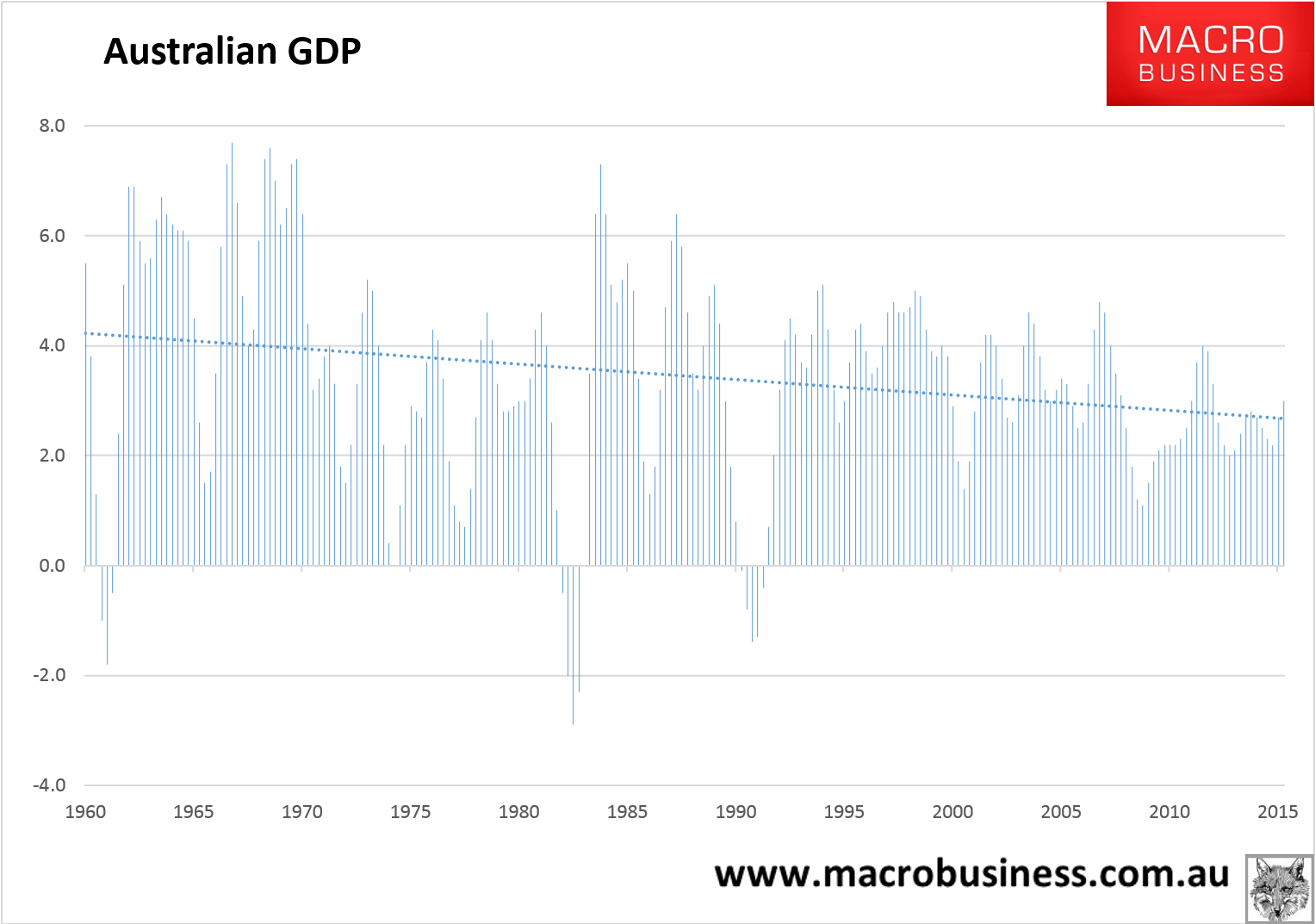
As well, Chinese growth is poised to rebound on stimulus over the next few quarters:
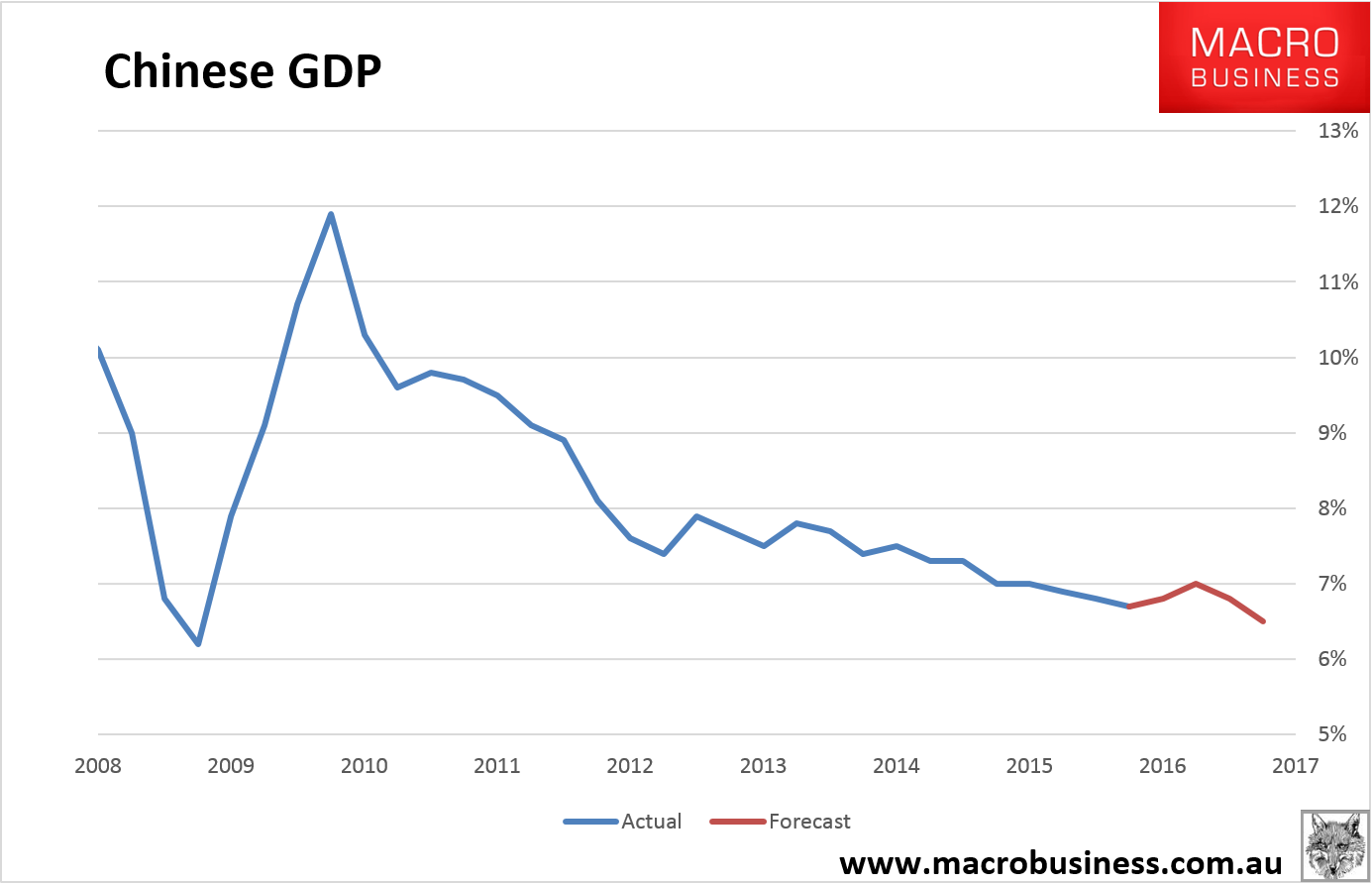
And this has temporarily lifted Australia’s terms of trade by a solid 6% or so from its December lows:
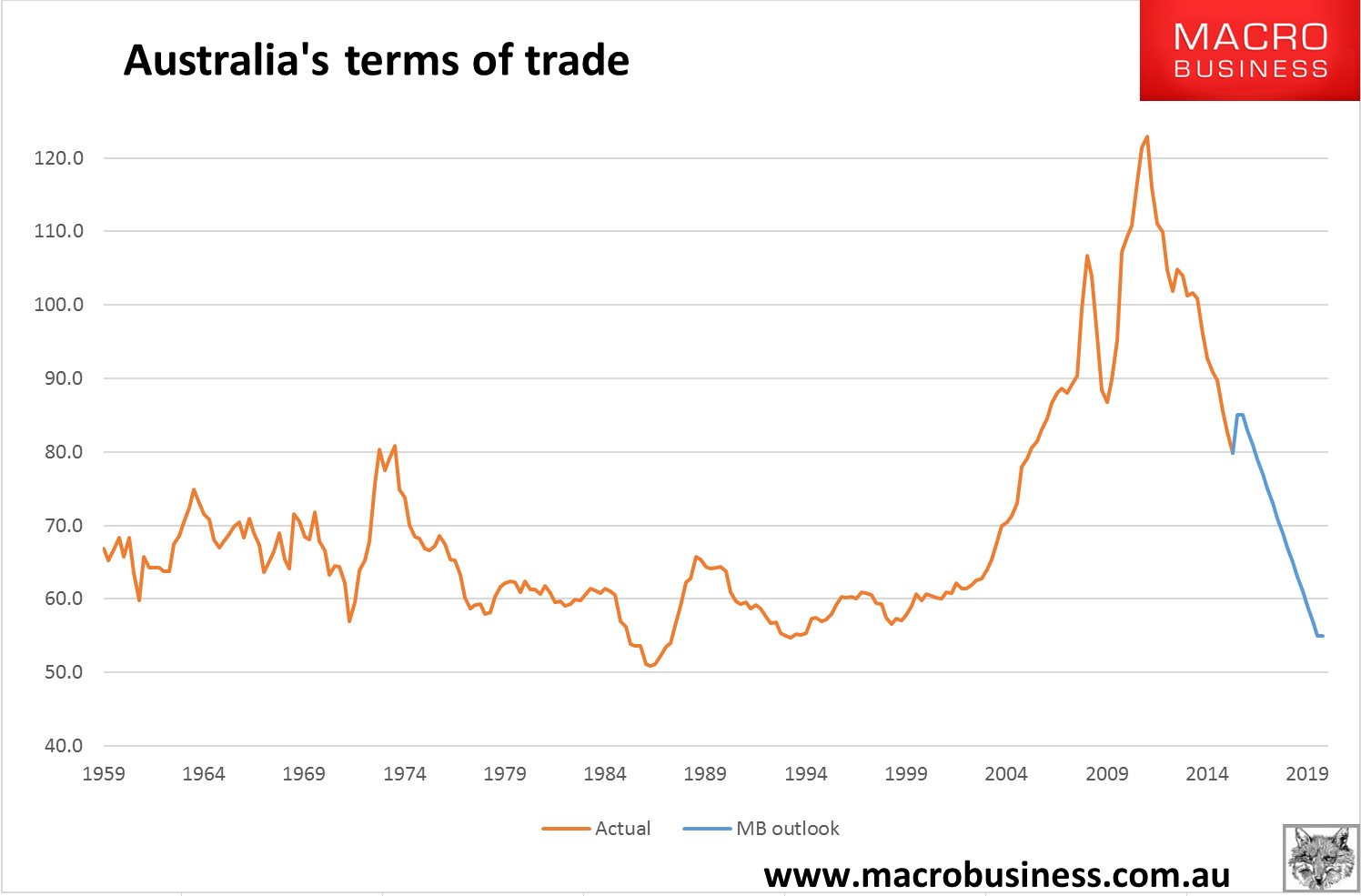
However, we do not expect this to last:
- Australia’s income shock will return in H2 as the Chinese growth pulse fades and with it Australia’s terms of trade as iron ore rolls. This has happened more swiftly than even we imagined that it would last month;
- house prices are stalling and falling on macroprudential tightening also slowing cyclical sector activity;
- a mid-year election is exacerbating that;
- the triple-header capex cliff in mining, cars and residential construction begins in H2;
- a firmer dollar to date this year will stall the non-mining tradable recovery.
None of these is fatal in and of itself but together we see them pushing growth back towards ‘stall speed’ in H2, low enough to lift unemployment again and erase Australia’s growth advantage. It is also clear that China’s dalliance with renewed stimulus is already over and a few quarters of marginally better growth is all we can expect from it.
Driver two has changed radically over the past month. Australian interest rates are now universally understood to be headed lower after tanking inflation triggered a rate cut and very dovish commentary for more. Friday night saw the Australian bond curve hit record lows at the short end:
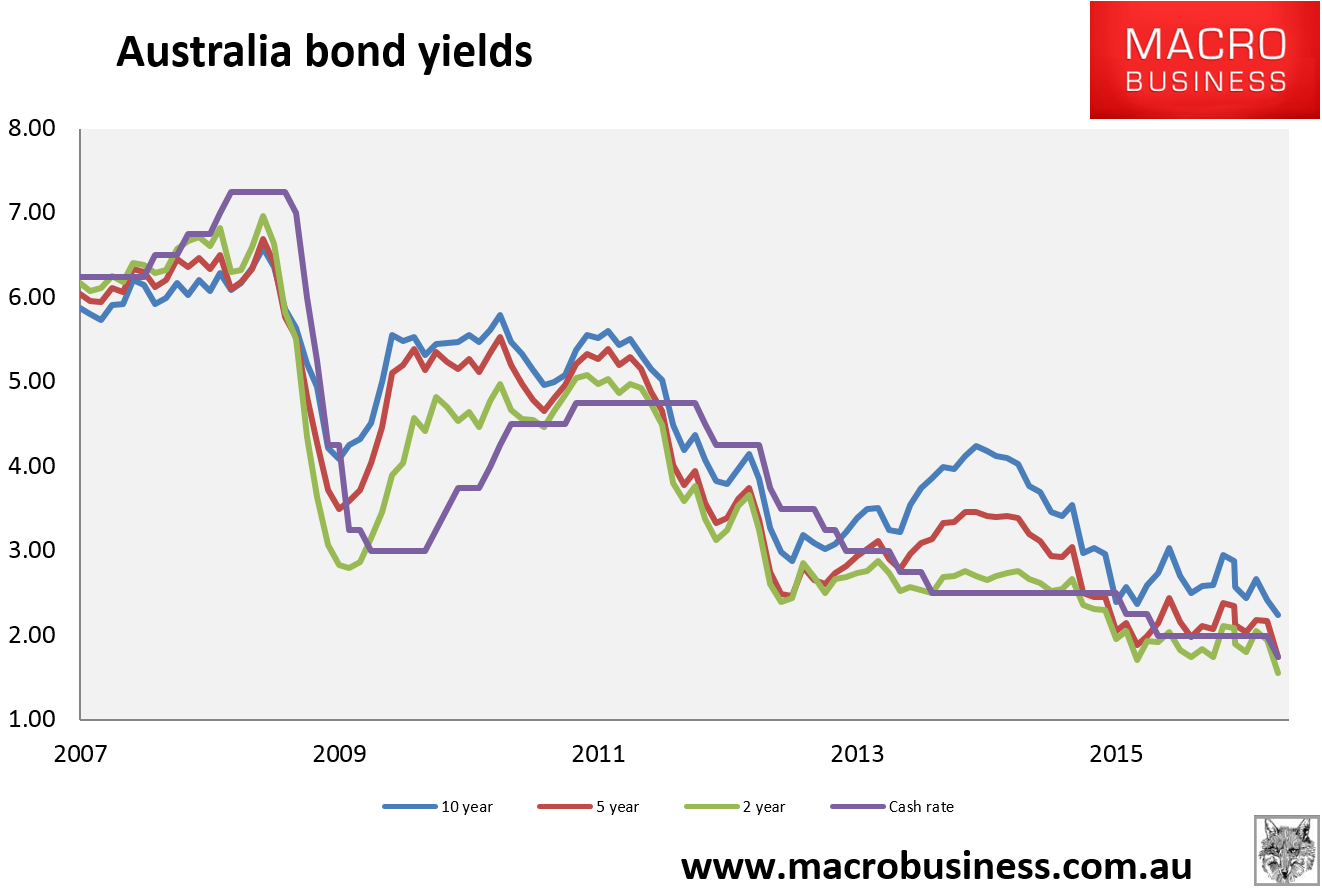
However, the yield curve or slope is still very flat on the 2/5 year, and hardly tearing it up on 2/10 either, signalling that the RBA is still well behind the curve:
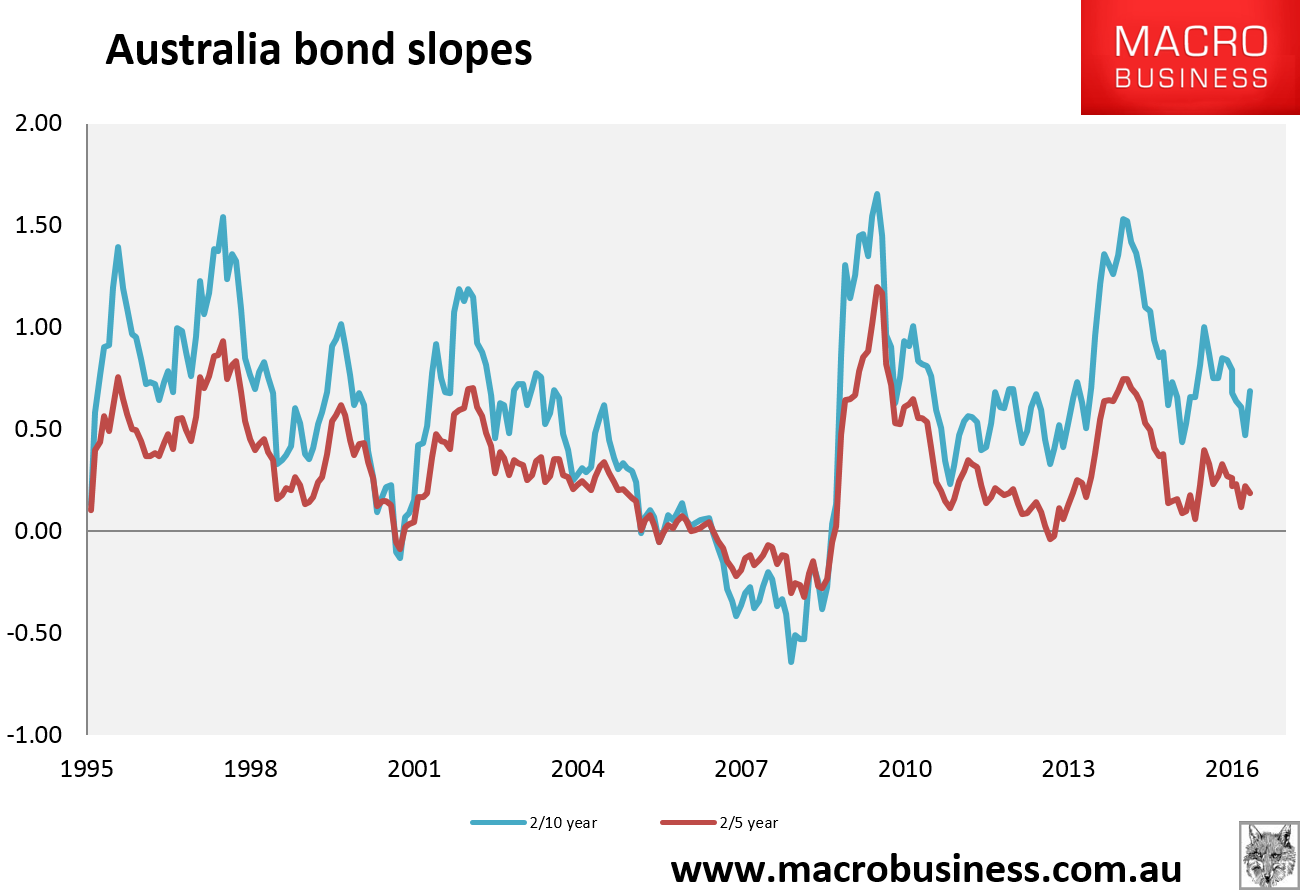
There is at least one more cut coming and possibly more this year. And the ultimate low of the cycle is now deeply in question with wider commentary beginning to reflect MB’s uber-dovish outlook of “a low as we can go”.
Moreover, compared with the US where the Fed has slowed but not stopped its tightening, the spread is now cratering at the short end with more ahead:
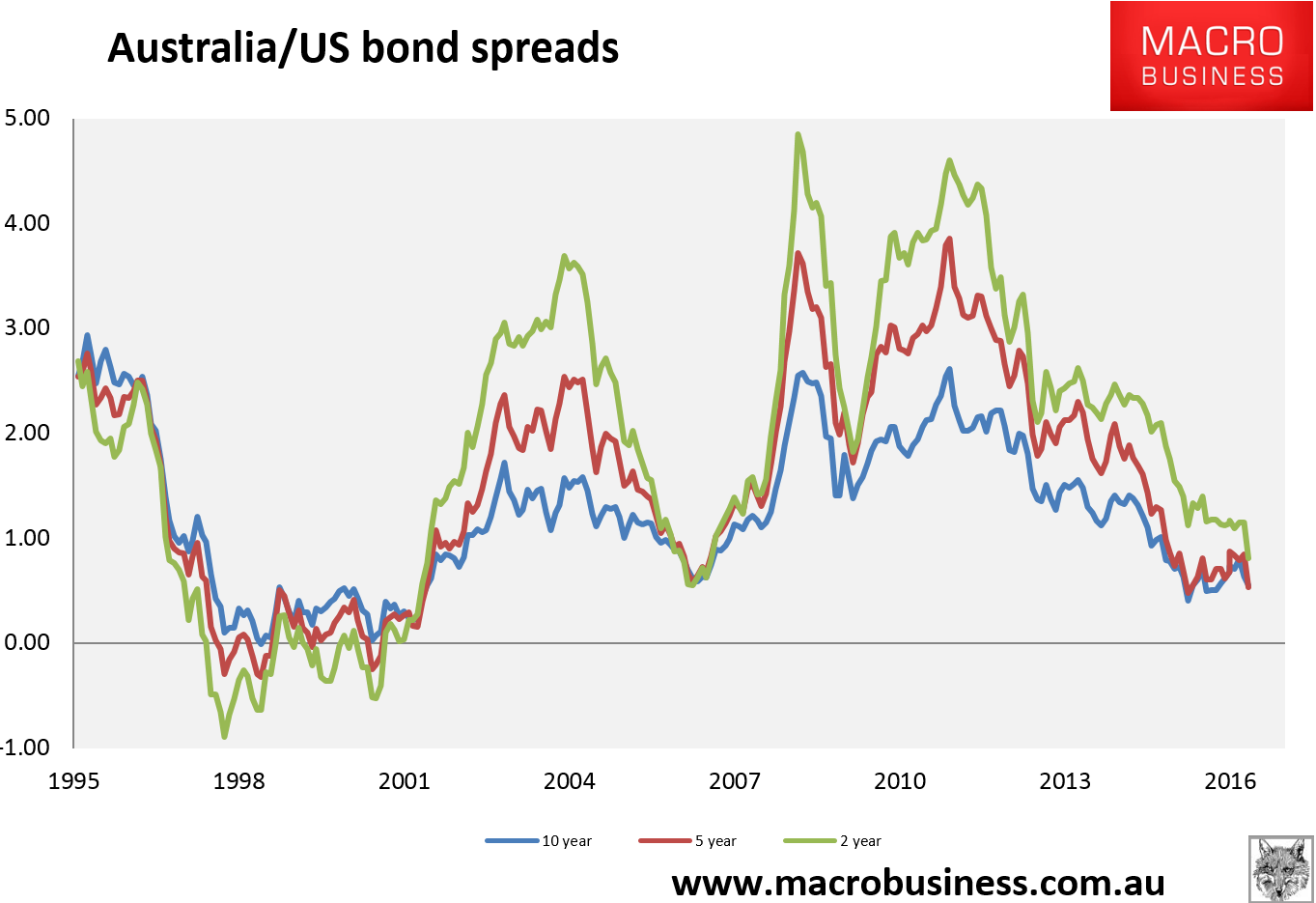
Driver three, chart technicals, now looks bearish for the Aussie as well with the declining channel well intact and a bearish and broken rising wedge in play:
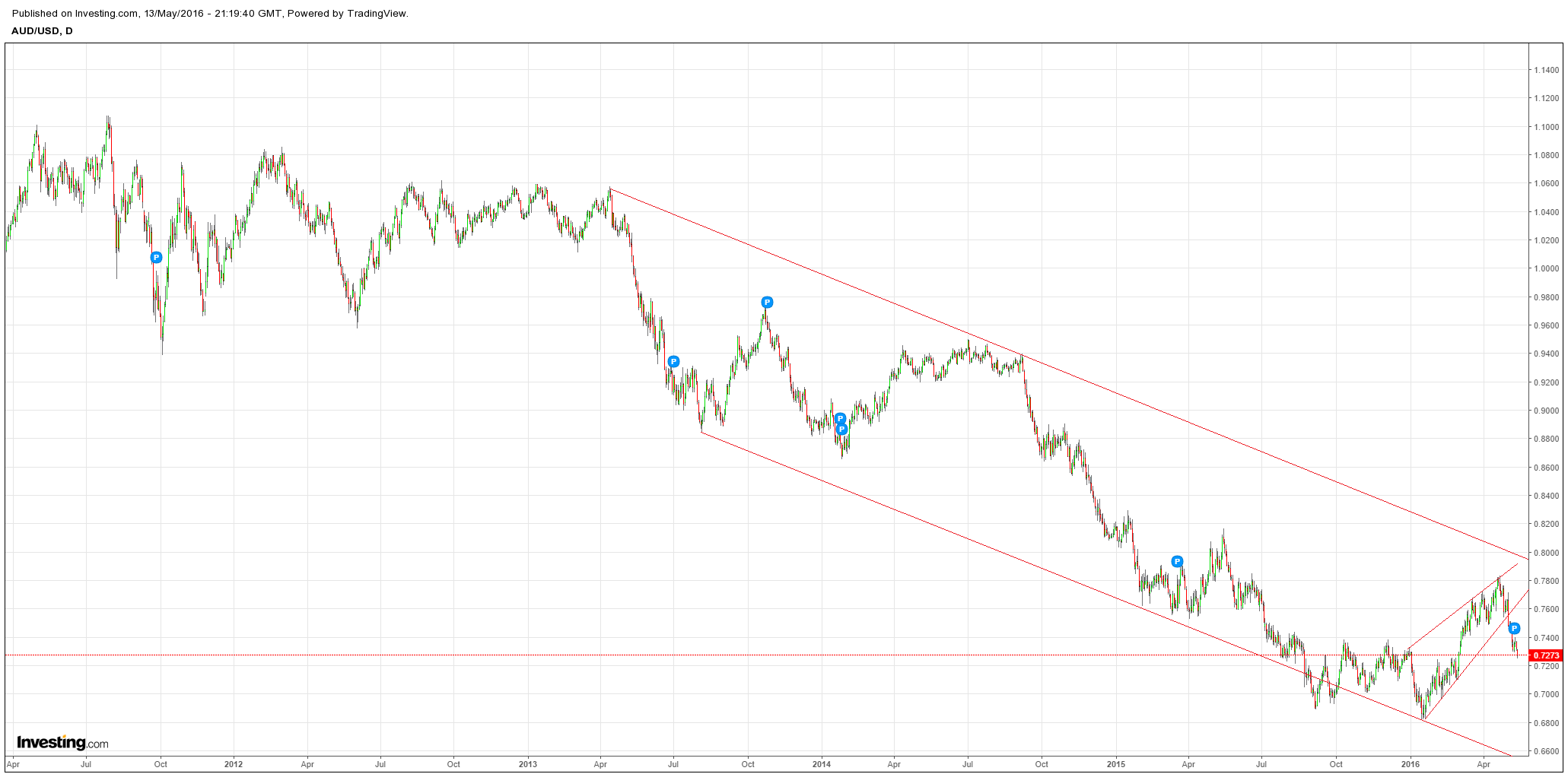
Driver four, sentiment, has the market still positioned moderately long with the Commitment of Traders report at +38k contracts:
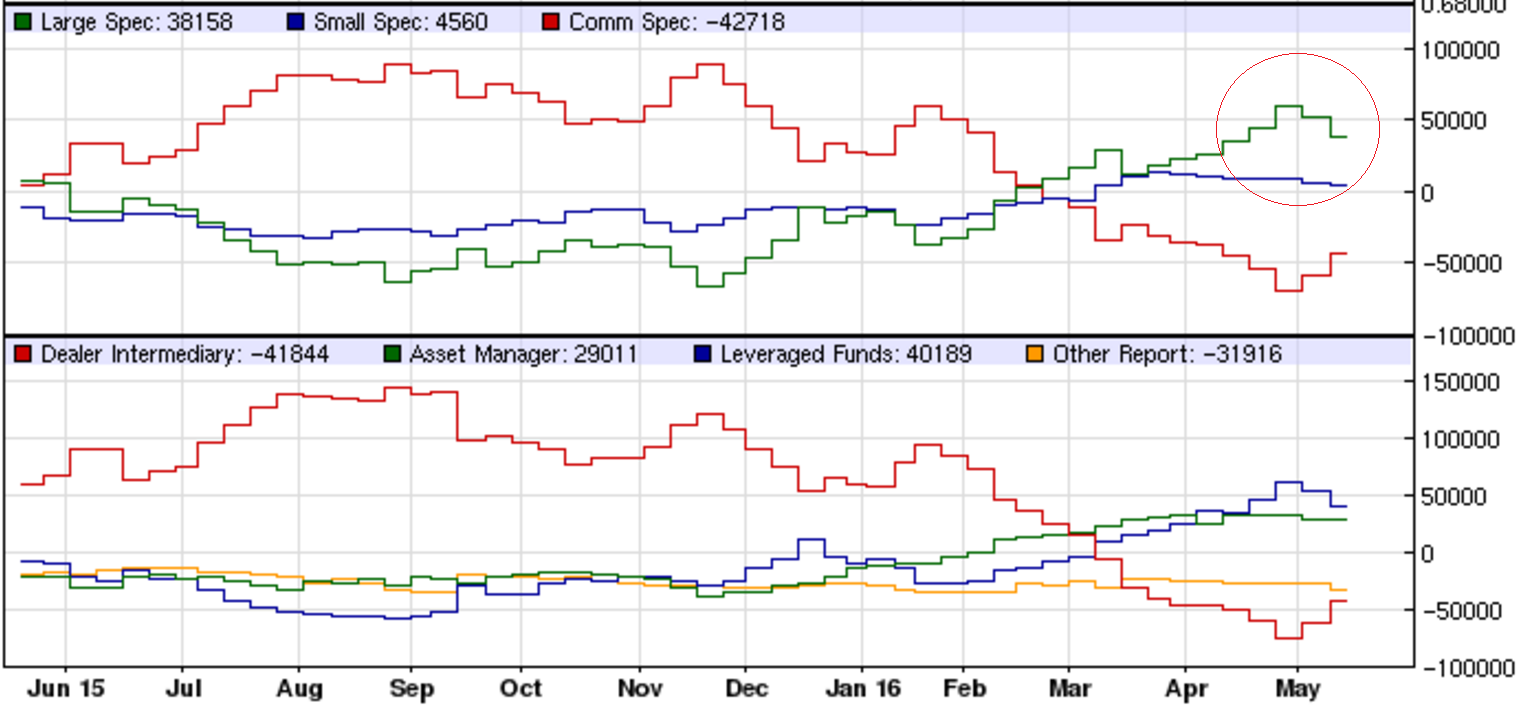
The market is far too long for emerging circumstances which is very Aussie dollar bearish. Recall that the nadir for previous selloffs was in the -70k contracts range…
There are two other possibles for sentiment. We know that central banks have been adding Aussie to their reserve portfolios for a few years. That has been a significant real support to higher valuations and general market sentiment around the currency. The IMF’s Currency Composition of Official Foreign Exchange Reserves (COFER) report is six months behind but up until Q4 2015 it showed official buying still trickling in:
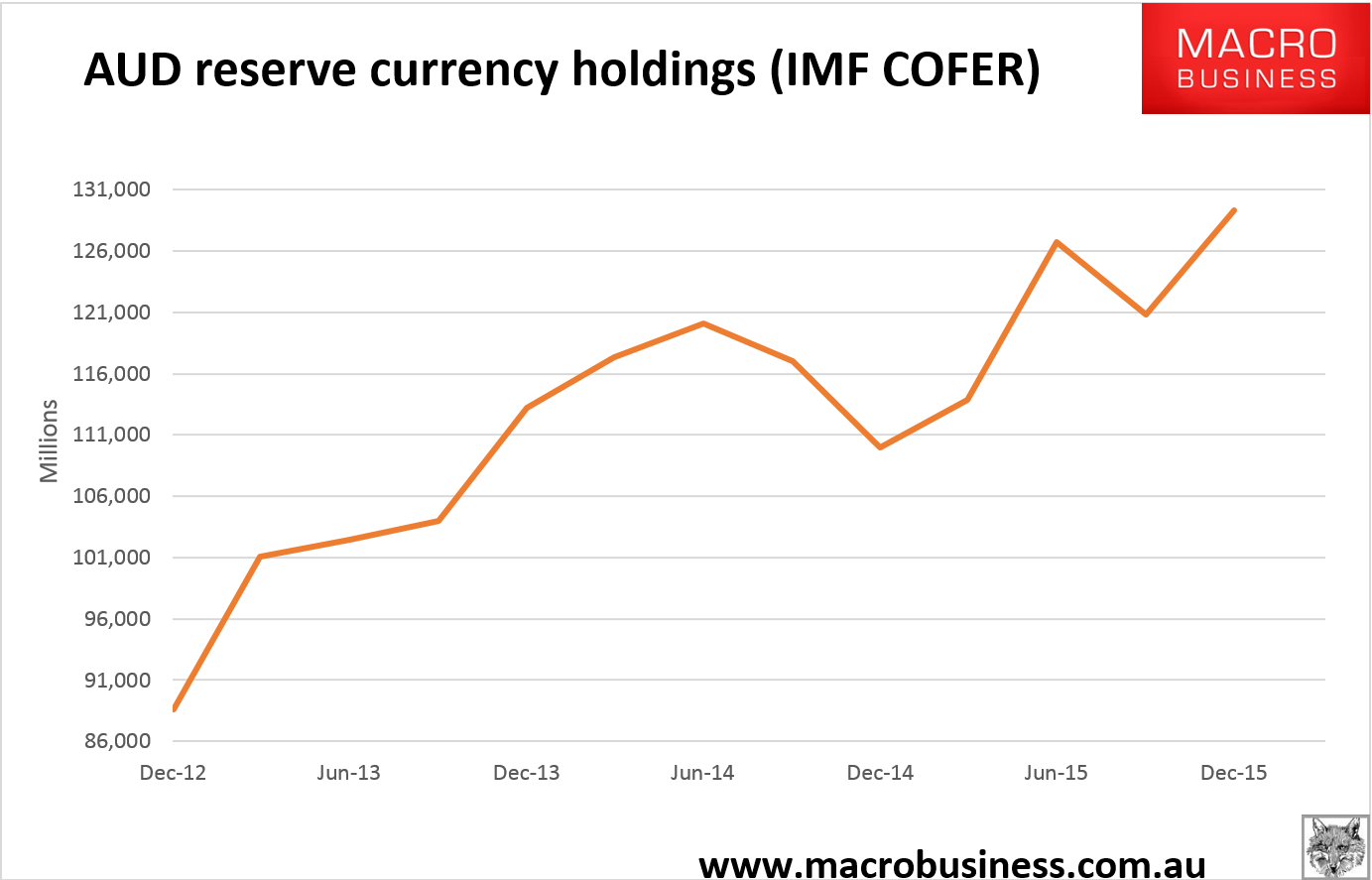
I don’t know why they keep coming despite the large losses but hey it’s a nice contrarian sell signal!
The second sentiment factor is the rising chance that the AAA sovereign rating will be stripped in the wake of the election. The Coalition’s Budget of Lies has significantly raised this likelihood to more probable than not. When it goes it will hit portfolio flows into the Aussie and sentiment more broadly quite hard.
The fifth driver, the valuation of the US dollar, has perhaps been the key change this year. Following the Mining GFC volatility of the first quarter, the Fed has roughly halved the pace of its intended tightening. That has taken a lot of pressure off the US dollar:
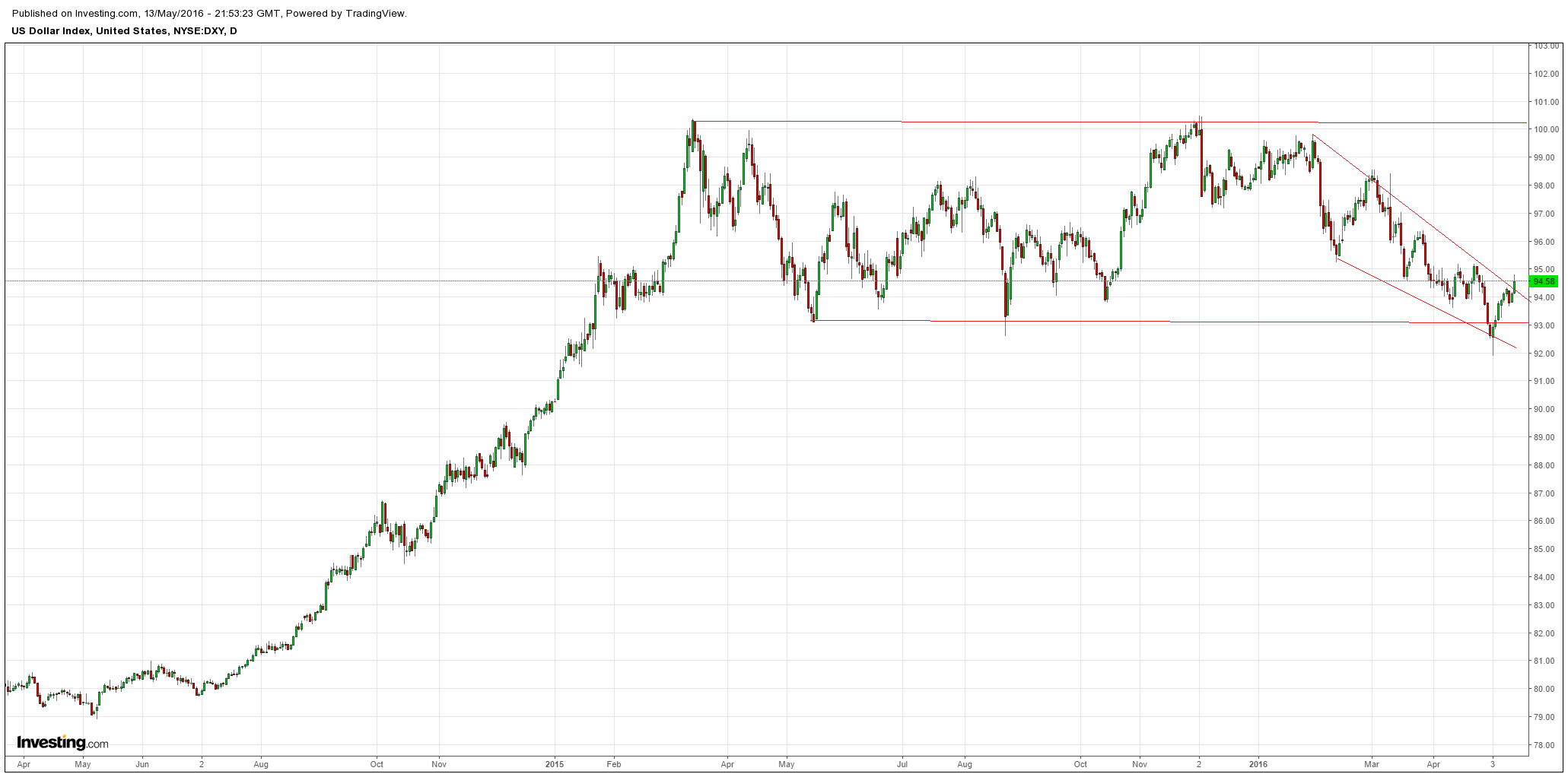
The chart pattern remains modestly bullish with a broken falling wedge within a larger sideways channel that appears to have had a false break.
Further, when we compare the US outlook with the other large reserve currencies in Japan, Europe and Britain their weakness is very obvious with more easing likely. However, this simple pattern is complicated now by the specter of “quantitative failure” and the possibility that their extraordinary monetary tools are exhausted hence those currencies have been rising. This is premature. Japan especially has shown a willingness to innovate and its next steps will be “helicopter money” whether buying assets like stocks, giving away retail vouchers or to just fund government directly. While none of these is QE they most certainly are currency debasement!
In Europe, we have not only weak growth and the prospect of similar monetary innovation following Japan (though the Bundesbank will not be happy) but we also have severe political strains emerging around the guerrilla war with ISIS and its role in promoting anti-euro political parties in Britain, France and everywhere else to boot. This risk of a major country exit is real and any risk-adjusted valuation of the euro is much lower than its face value.
In short, even if the US dollar falls for while, I can’t see it getting far before reversing upwards given it is still the only major reserve currency worth owning. At least until the Fed embarks on another round of its own QE and that will take virtually a cycle-ending shock first.
The upshot of the five drivers is that the cyclical conditions for Australian dollar strength have well and truly peaked and turned very obviously bearish while the structural factors remain weak.
Our initial target of 60 cents for 2016 was shifted up to 66 cents when the Fed slowed its tightening. However, the risks are mounting to the downside of the target. If the AAA goes, the terms of trade roll over sharply and the RBA steps on the gas aggressively then 60 cents is back in play. Our cycle low outlook of 45 cents is still in place when the next global shock arrives.

